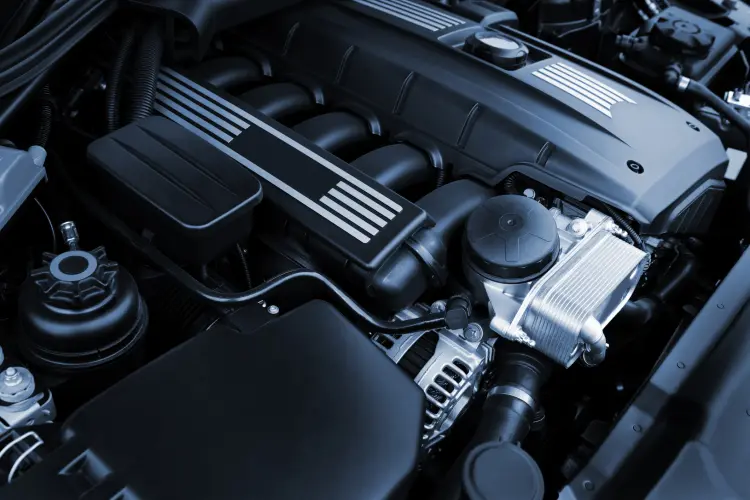The Ultimate Guide To Powertrain Warranties
powertrain coverage
6,725Powertrain warranties are a cornerstone of automotive peace of mind: they protect the very heart of your vehicle’s operation, covering the engine, transmission, and other critical components that get you where you’re going. In this post, we’ll explore what a powertrain warranty is, what it typically covers (and what it doesn’t), how long you can expect coverage to last, tips for getting the most out of your warranty, and when it might make sense to extend or upgrade your protection.

What Is a Powertrain Warranty?
At its core, a powertrain warranty guarantees the repair or replacement of components that deliver power from the engine to the wheels. While every manufacturer’s policy differs, powertrain almost always includes:
-
Engine: Internal components (pistons, crankshaft, timing chain/belt, gaskets), though wear-and-tear parts like spark plugs may be excluded.
-
Transmission/Drivetrain: Automatic or manual transmission internals, transfer case, drive shafts, CV joints.
-
Differential and Axles: The gears and bearings that distribute power to the wheels.
By contrast, a bumper-to-bumper (“comprehensive”) warranty covers nearly everything except routine maintenance and wear items; a powertrain warranty is narrower, but often lasts much longer. For a deeper dive into how powertrain coverage differs from full-vehicle warranties, see Kelley Blue Book’s “What Is a Powertrain Warranty?”
Typical Coverage Terms
Most powertrain warranties fall into one of these buckets:
| Warranty Type | Mileage Limit | Time Limit |
|---|---|---|
| Manufacturer Powertrain | 60,000–100,000 miles | 5–10 years |
| Certified Pre-Owned (CPO) Add-On | 75,000–125,000 miles | 5–10 years total age |
| Extended Service Contract | Varies by plan | Varies by plan |
-
New-vehicle powertrain warranties often run 5 years/60,000 miles at the low end, up to 10 years/100,000 miles for brands known for longevity.
-
CPO programs may extend factory coverage by adding months or miles, depending on vehicle age and mileage at certification.
-
Aftermarket/extended plans are sold by dealers or third-party providers, with customizable terms—but watch for exclusions and deductibles.
Examples of manufacturers’ official terms:
What’s Usually Excluded
Even the best powertrain warranty won’t cover:
-
Routine maintenance: Oil changes, filters, brake pads, spark plugs, coolant flushes.
-
Wear items: Clutch discs, suspension bushings, belts, hoses.
-
Damage from misuse: Racing, off-roading (if not rated for it), neglect (failure to maintain).
-
Modifications: Aftermarket performance parts—even if they didn’t cause the failure, modifying your engine or drivetrain often voids coverage.
Always read the fine print: some warranties demand you use OEM fluids and parts, or require service at authorized shops. For an overview of your legal rights under U.S. warranty law, see Consumer Reports’ “What You Need to Know about Warranty Laws”
Maximizing Your Warranty Benefits
-
Follow the maintenance schedule religiously. Missed oil changes or fluid flushes can give a provider cause to deny a claim.
-
Keep every service record. A stamped logbook or itemized receipts build your case if there’s a dispute.
-
Address issues early. Small noises or leaks can become big repairs; fix them before they escalate and risk being deemed neglect.
-
Understand claim procedures. Know who to call, what documentation you need, and whether you need pre-authorization for major repairs.
For additional owner-level tips on maximizing warranty coverage, see Consumer Reports’ “Your Guide to Car Warranties”
Do You Need an Extended Warranty?
If you plan to keep your vehicle beyond factory coverage—say, 120,000 miles or more—an extended powertrain plan can make financial sense. Compare:
-
Cost of repairs vs. plan price: Research common failure points for your make/model (e.g., transmission rebuilds can top $3,000).
-
Deductibles: A $100 or $200 deductible per visit is typical—make sure it still offers value.
-
Provider reputation: Look for third-party administrators with high BBB ratings and straightforward claims processes.
When Coverage Ends
Once your warranty expires, you’re on the hook for every repair. Keep an eye on:
-
Mileage milestones: Plan service just before hitting a new threshold.
-
Time limits: Some warranties expire by age, not mileage—so a lightly driven van could still age out at ten years.
-
Transferability: If you sell your car while it’s still under warranty, transferable coverage can boost resale value.
Conclusion
A strong powertrain warranty reduces the anxiety around major mechanical failures and can save you thousands in repair bills. By knowing exactly what’s covered (and what’s not), staying on top of maintenance, and considering an extended plan if you drive your car long-term, you’ll keep the powertrain—and your budget—running smoothly. Always read your warranty booklet carefully, ask questions upfront, and keep meticulous records: that way, when something does go wrong, you’ll be ready to make the most of your coverage.
TL;DR: Keep your engine running—and your wallet happy. Discover what a powertrain warranty really covers (and what it doesn’t), learn how to maximize your benefits, and find out if extending your coverage is worth the cost.
— Neil Coker
